What is a Graph?
In math, a graph can be defined as a pictorial representation or a diagram that represents data or values in an organized manner.
The points on the graph often represent the relationship between two or more things.
Here, for instance, we can represent the data given below, the type and number of school supplies used by students in a class, on a graph. We begin by counting each supply and representing the data in particular colors in a systematic order in a table.
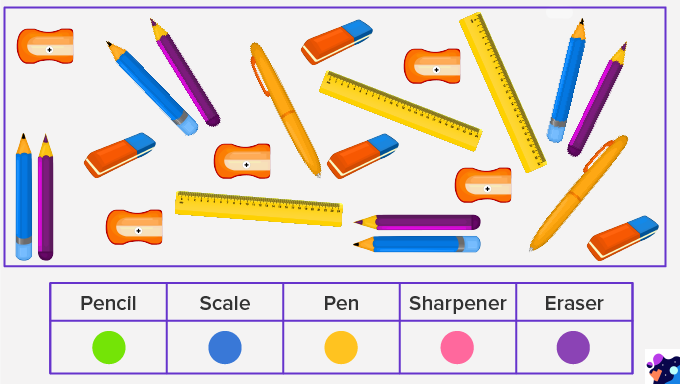
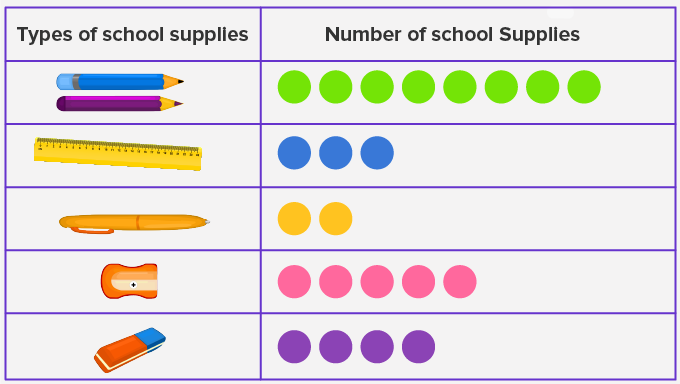
We can also represent the data using a bar graph. The number of each of the supplies is represented with bars. The height of the bar, the more is the number of the supply or items used.
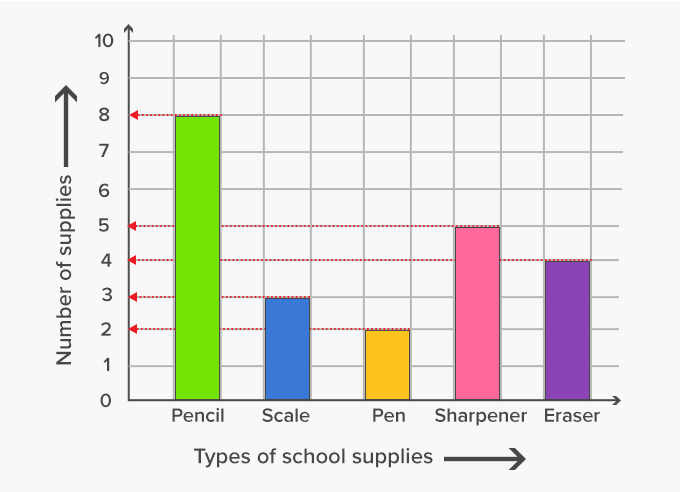
Recommended Games
Types of Graphs:
Pictograph
The representation of the information through pictures is called pictograph. A certain number of items is represented by each picture. For example, you can use a picture of a cricket bat to display how many cricket bats are sold by a shop during a certain week.
In this pictograph, 1 picture of the cricket bat represents 4 cricket bats. So, according to the graph, 12 bats (4 + 4 + 4) were sold on Tuesday.
Bar Graph
A bar graph is the representation of numerical data by rectangles (or bars) of equal width and varying height. The gap between one bar and another is uniform throughout. Bar graphs can be either horizontal or vertical. The height or length of each bar relates directly to its value.
Line Graph:
A line graph uses dots connected by lines to show the changes over a period of time.
Pie Chart:
The pie chart is also known as a circle graph. It shows how a whole is divided into different parts. The pie chart shows the relative size of each data set in proportion to the entire data set. Percentages are used to show how much of the whole each category occupies.
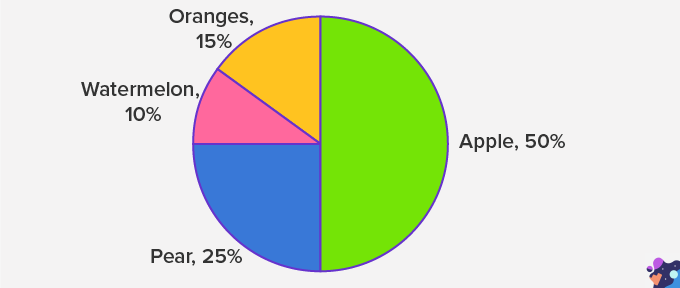
Recommended Worksheets
Solved Examples On Graph
Example1: State whether the given statements are true or false.
- In a bar graph, the width of bars may not be equal.
- In a bar graph, bars of uniform width can be drawn both vertically as well as horizontally.
- In the bar graph, the gap between two consecutive bars may not be the same.
- In the bar graph, each bar represents only one value of numerical data.
Solution:
- False. In a bar graph, bars have equal width.
- True
- False. In a bar graph, the gap between two consecutive bars should be the same.
- True
Example 2: Name the type of each of the given graphs.
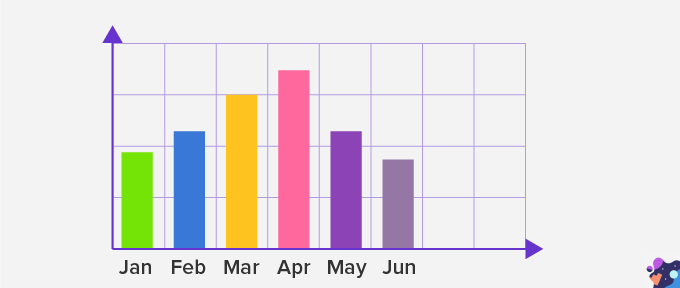
______________________________
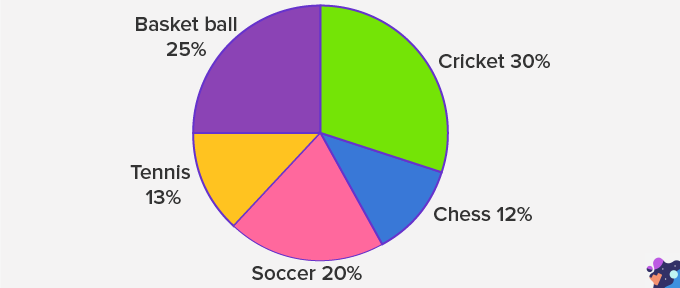
______________________________
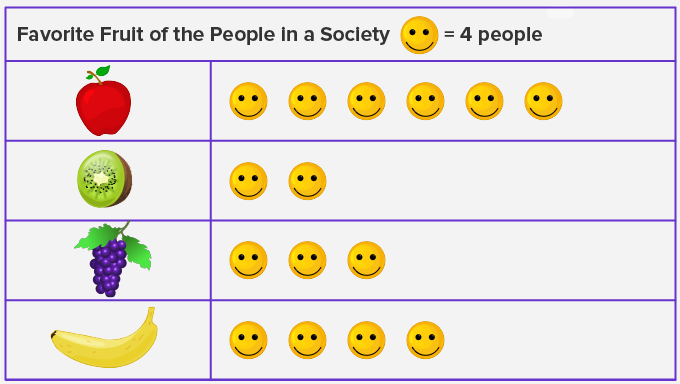
______________________________
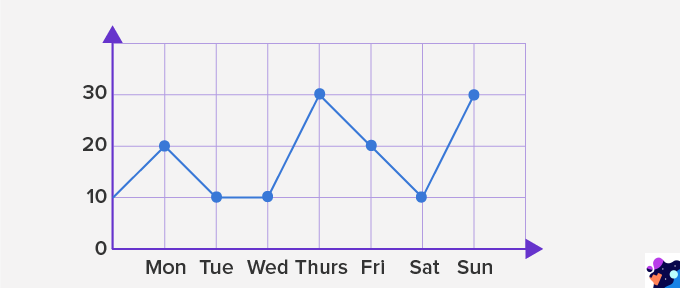
______________________________
Solution:
(a) Bar graph
(b) Pie chart
(c) Pictograph
(d) Line graph
Example 3: Refer to the given pictograph and answer the questions.
- Which was the most popular flavor?
- 60 cones of which flavor was sold?
- How many vanilla flor cones were sold?
- How many total cones were sold?
Solution:
- Mint Chocolate Chip
- Strawberry
- 50 cones
- 340 cones
Example 4: Read the bar graph and answer the questions.
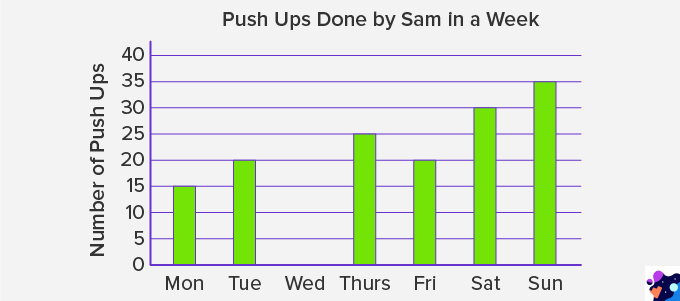
(a) How many push-ups were done on Thursday?
(b) On which day no push-ups were done?
(c) On which day maximum push-ups were done?
(d) Sam’s target was to do at least 140 push-ups in the week. Check if Sam was able to achieve his target not.
Solution:
(a) 25
(b) Wednesday
(c) Sunday
(d) Total pushups done in a week = 15 + 20 + 0 + 25 + 20 + 30 + 35 = 145 push ups
So, 5 more pushups should have been done to complete the target of 150.
Practice Problems On Graph
Graph
A circular graph in which each sector represents a particular quantity is called a:
A pie chart is a graph that divides a circle into different sectors. Each sector is created proportionally to represent a particular quantity.
Which type of graph displays data that changes continuously over a period of time?
A line graph uses dots connected by lines to show the changes over a period of time.
Which type of graph represents data with rectangles of uniform width?
Bar graphs use rectangles or narrow columns to represent data.
A pictograph uses the following two images. Use the information below to find the unknown value:

100 ÷ 2 = 50.

Frequently Asked Questions On Graph
What is data?
Data is a collection of facts gathered to give some meaningful information.
What differentiates data from information?
Data is a collection of numerical facts in raw and unorganized form. Information is the processed data arranged in an organized and structured form.
Why do we need to learn data representation?
Representing data in visual form or graphs gives a clear idea of what the information means and makes it easy to comprehend and identify trends and patterns.



























